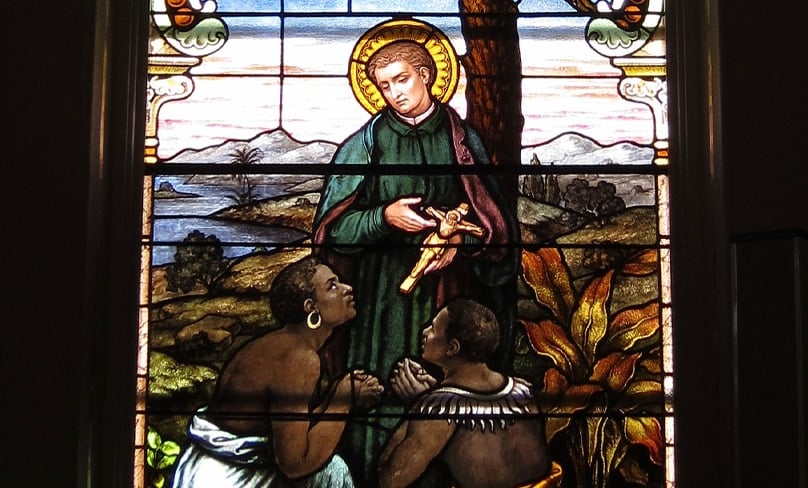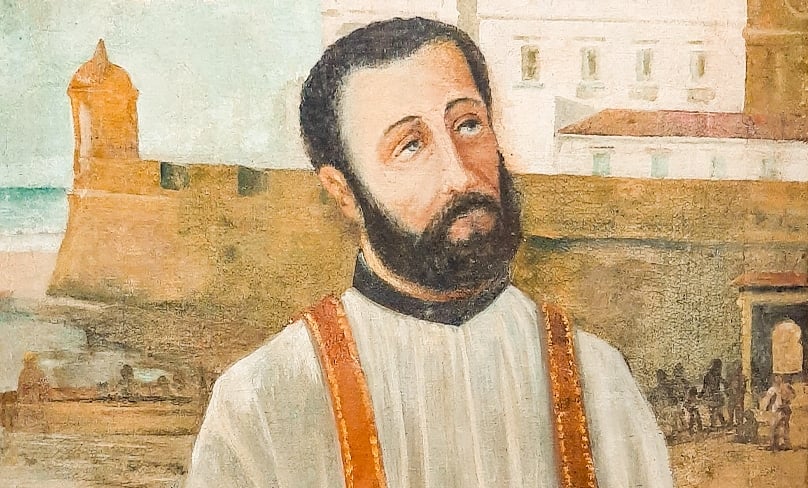
I am interested in current efforts to abolish slavery in its various forms and heard that St Peter Claver might be someone to whom to entrust this work. What did he do that would make this appropriate?
St Peter Claver would be a great saint to whom to entrust efforts to abolish slavery since he dedicated most of his life to helping slaves. He was born Pedro Claver y Corberó in Verdú, a village in the region of Catalonia, Spain, in 1580. His parents were farmers and devout Catholics.
Peter went on to study at the University of Barcelona, where he was known for his intelligence and piety.
After two years of study there he wrote in his notebook: “I must dedicate myself to the service of God until death, on the understanding that I am like a slave.”
After completing his university studies, Peter entered the newly founded Society of Jesus, the Jesuits, in Tarragona at the age of twenty. Upon completing the novitiate, he went to study philosophy in Palma, on the Mediterranean island of Mallorca.
While there he came to know St Alphonsus Rodriguez, a lay brother known for his holiness and gift of prophecy.
Rodriguez felt that God was calling Peter to spend his life in the Spanish colonies of the Americas and he urged him to accept that calling.
St Peter did volunteer to serve in the Spanish colonies and he arrived in Cartagena, Colombia, in 1610. Not yet a priest, he lived in Jesuit houses in Tunja and Bogotá while completing his six years of theology.
During those years he became deeply disturbed on learning of the harsh treatment given to the black slaves arriving from Africa.
At that time the slave trade had been established in the Americas for about a century, bringing Africans from Angola and the Congo to work in mines and on plantations. Cartagena was a hub where some ten thousand slaves arrived each year.
The conditions on the ships were so bad that an estimated one third died in transit. Although the slave trade had been condemned by Popes Paul III and Urban VIII, it was a lucrative business and it continued to flourish.
St Peter set out to minister to the slaves, boarding the ships and entering the filthy holds to treat the frightened slaves, who had managed to survive several months at sea in horrendous, crowded conditions.

When the slaves were taken from the ships to penned yards to be scrutinised by crowds of buyers, St Peter would bring them food and medicine and treat them with great kindness.
With the help of African interpreters and catechists, he would give them basic instructions in the faith.
When St Peter was solemnly professed in 1622, he signed his final profession document in Latin, “Peter Claver, ever the servant [or slave] of the Africans”.
During the season when the ships did not arrive, St Peter would go through the countryside where the slaves worked, giving them spiritual consolation, urging their masters to treat them humanely and ensuring that their Christian and human rights were respected.
During those country missions he would, as far as possible, avoid the hospitality of planters and overseers and lodge instead with the slaves in their own quarters.
During his forty years of ministry to the slaves, it is estimated that he personally catechised and baptised some 300,000 slaves.
He worked for the abolition of slavery, and through his work the condition of the slaves slowly improved.
St Peter’s work went beyond caring for the slaves themselves. He would preach in the city square and minister to the well-to-do members of society, sailors, traders, visitors and condemned criminals, often preparing them for death.
He was a frequent visitor to the hospitals.
After four years of ill health prevented him from leaving his room, where he was largely neglected and badly treated, he finally died on 8 September 1654. Such was his fame of sanctity that people took away from his room anything that might serve as a relic.
St Peter was canonised in 1888 by Pope Leo XIII, along with St Alphonsus Rodriguez. On that occasion Pope Leo said, “No life, except the life of Christ, has moved me as deeply as that of Peter Claver.” In 1896 Pope Leo declared him patron of missionary work among African peoples.
